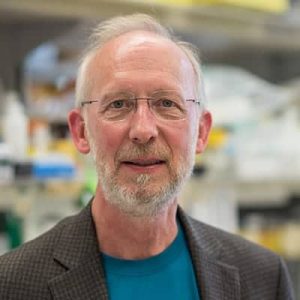Don W. Cleveland is a 2018 NOMIS Awardee and has been professor and department chair of Cellular and Molecular Medicine at the University of California San Diego (UC San Diego) since 2008.
Cleveland grew up in Las Cruces, NM, US. He earned a BS in physics from New Mexico State University, and a PhD in biochemistry from Princeton University (Princeton, US) in 1977. He did postdoctoral work at the University of California at San Francisco before becoming a professor of biological chemistry at Johns Hopkins University School of Medicine in 1981, moving to UC San Diego in 1995. He has received numerous honors and awards, including the 2018 Breakthrough Prize.
Cleveland has made multiple pioneering discoveries that have led to a greater understanding of neurodegenerative diseases, including the identification of tau, the protein whose aberrant assembly and accumulation is a central component of cognitive disorders, including Alzheimer’s disease, frontal temporal dementia, and chronic traumatic brain injury. He identified key steps that trigger and accelerate ALS (amyotrophic lateral sclerosis) and is responsible for discoveries on the etiology of Huntington’s disease. He has developed gene-silencing therapies (“designer DNA drugs”), which can block the activity in the nervous system of any target gene. Through his project, Mechanisms of Gene Silencing and Liquid-Liquid De-mixing in the Nervous System, Cleveland is investigating a previously unknown mechanism for cell entry in the mammalian nervous system, developing gene editing/gene suppression approaches, and identifying the underlying basis for liquid-liquid de-mixing and its contribution to neurodegenerative disease.




